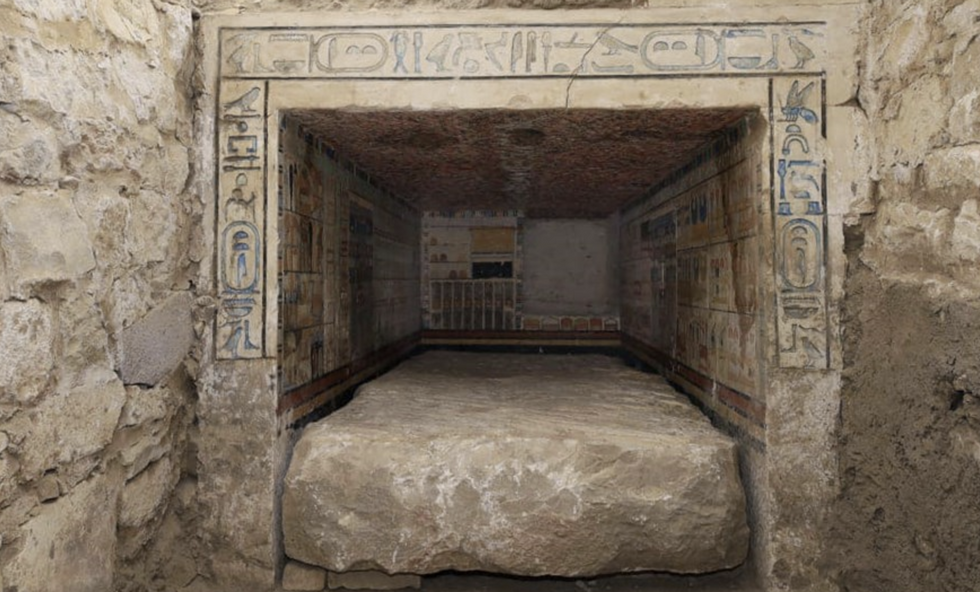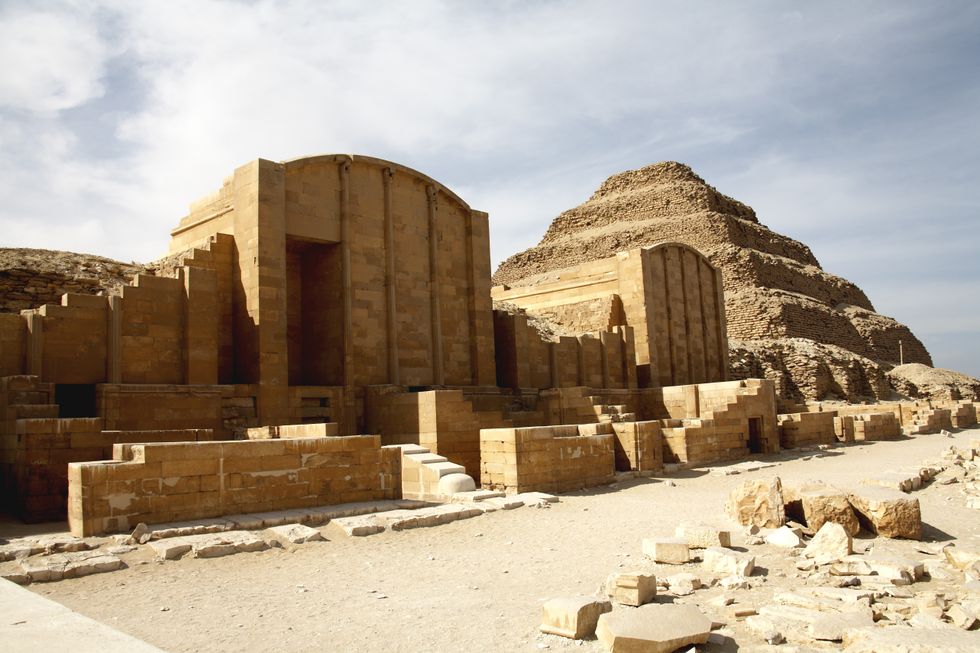French-Swiss archaeologists have unearthed an "incredible" 4,000-year-old tomb belonging to an ancient Egyptian physician.
The discovery was made in Saqqara, a prestigious burial ground for high-ranking officials of the ancient civilisation.
Calling it an "incredible find", the Egyptian Ministry of Tourism and Antiquities revealed that the tomb belonged to Tetinebefou, a celebrated physician who lived during the Sixth Dynasty, specifically during the reign of King Pepi II between 2305-2118 BC.
Since 2022, the archaeological team has been working in the southern section of Saqqara, where they found the tomb among a cluster of burial sites designated for senior statesmen and royal employees.
Inscriptions found in the tomb reveal Tetinebefou held multiple prestigious positions within the ancient Egyptian court
Egyptian Ministry of Tourism and Antiquities
Serket, also known as Selket, was an important deity associated with protection, healing, and venomous creatures like scorpions.
Experts believe that he might have served at the highest levels of ancient Egyptian society, as his tomb featured exquisite architectural and artistic elements.
"The tomb is adorned with stunning carvings and vibrant artwork, including a beautifully painted false door and scenes of funerary offerings," the Egyptian Ministry of Tourism and Antiquities said.
Despite the tomb's historical significance, it was found to have been extensively looted before its discovery.
Philippe Collombert, who leads the French-Swiss archaeological team, reported that the tomb had been "almost completely ransacked" prior to their excavation, adding that no human remains were discovered within the burial chamber.
Saqqara is considered one of Egypt's most significant archaeological sites
GETTY
"This incredible find adds to Saqqara's rich legacy as one of Egypt's most significant archaeological sites," the Egyptian Ministry of Tourism and Antiquities commented.
Saqqara, where this remarkable discovery was made, is considered one of Egypt's most significant archaeological sites.
Located approximately 30 kilometres south of Cairo, it served as a major burial ground and religious centre for Memphis, ancient Egypt's first unified capital.
The site holds such historical importance that it forms part of the UNESCO World Heritage Site of Memphis and its Necropolis, alongside Giza and Dahshur.

 By GB News (World News) | Created at 2025-01-11 14:29:59 | Updated at 2025-01-11 17:07:06
2 hours ago
By GB News (World News) | Created at 2025-01-11 14:29:59 | Updated at 2025-01-11 17:07:06
2 hours ago










